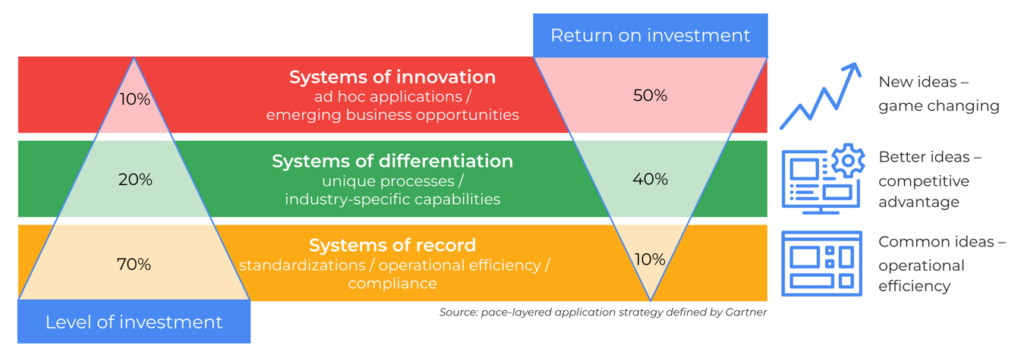We kick off our blog post series on Sara Harper’s Enterprise Software modernization journey. As the CIO of UrbanBox Living, she is determined to return the UrbanBox on-prem ERP system to its original state.
Sara draws from her industry experience, noting the long-term implications of ERP customizations. She recognizes that ERP customizations add numerous complexities to an already complicated system. As Jan Baan – pioneer of the ERP industry – famously says: “ERP is the mother of all complexities.”

As an avid reader with a deep-rooted drive to learn, Sara closely follows industry trends and developments evangelized by research organizations like Gartner. After attending several webinars by Gartner analysts, she is convinced that UrbanBox needs to embrace Gartner’s Pace-Layered Model, which categorizes enterprise software solutions into ‘Systems of Record,’ ‘Systems of Differentiation,’ and ‘Systems of Innovation.’
During the ’90s and early 2000s, many organizations invested heavily in core ERP solutions mainly designed for ‘on-premise’ deployment. Gartner classifies this layer as ‘Systems of Record.’ However, since no ERP system addresses every industry-specific process, many organizations require additional solutions to address functional gaps or unique process needs. Gartner recommends that support for such processes is added with off-the-shelf point solutions operating in a separate but integrated ‘Systems of Differentiation’ layer, leaving the Systems of Record layer in a vanilla state. This approach is more cost-effective than customizing a System of Record. The same logic applies to adding or developing support for innovative new ideas and competitive solutions, which are kept separate in a third integration layer dedicated to ‘Systems of Innovation.’
With a track record in managing Enterprise Software,
Sara has learned that ERP does what it does very well…
but is NOT the place to innovate or differentiate your business.
Despite her predecessor’s approach of customizing the ‘System of Record,’ Sara recognizes the importance of segregating distinct processes. She strives to restore the ERP software to its vanilla state while safeguarding integrations with third-party systems like UrbanBox’s subscription-based Transportation Management System. The challenge lies in recreating support for UrbanBox’s unique functional requirements within the ‘Systems of Innovation’ layer, requiring prudent decisions to balance modernization and stability. However, Sara realizes that compared to the core ERP investment, the potential return on investment for innovative new solutions that can work in concert with the ERP system is comparatively much higher.
In addition to the pace-layered approach, Sara realizes the UrbanBox IT infrastructure should adopt Gartner’s ‘Composable Applications,’ model, which requires:
- Adopting a Composable Thinking approach of modularity and orchestration;
- The legacy ERP system becomes one of multiple Packaged Business Capabilities in a larger, flexible, and Composable Business Architecture;
- Created via Composable Technologies following the MASA principle (Mesh Application Service Architecture)
A composable and swappable architecture – where application functions are accessible as services via APIs – will enable UrbanBox to avoid major re-platforming efforts in the future. It allows UrbanBox to continuously evolve, and quickly respond to changing market needs by embracing new technologies piecemeal, such as using artificial / business intelligence and cloud services, while avoiding vendor lock-in.
According to Gartner, by 2025, 60% of new SaaS designs will support both UI-first and API-first access, making preparedness for composability a common cloud application trait. By 2026, the top 20 cloud platforms and SaaS providers will offer component marketplaces to enable Composable Application strategies.
The Challenge
While this is the right direction for UrbanBox, the CFO and Board of Directors are questioning Sara’s decision to forge a path that diverges from their ERP vendor’s recommendation, with whom they have had a long relationship. Directed by the board, Sara has no choice but to invite the vendor and review options. During the meeting, the vendor casts doubts on their every move. Faced with the potential loss of a customer with associated revenue, the vendor offers discounts and promises technology improvements.
As Sara grapples with this twist, the delicate balance between modernization and organizational stability hangs. Will Sara’s determination and strategic understanding overcome this unexpected obstacle? Stay tuned!
In our next blog post, Sara addresses her first
modernization challenge to streamline and improve invoice processing.





